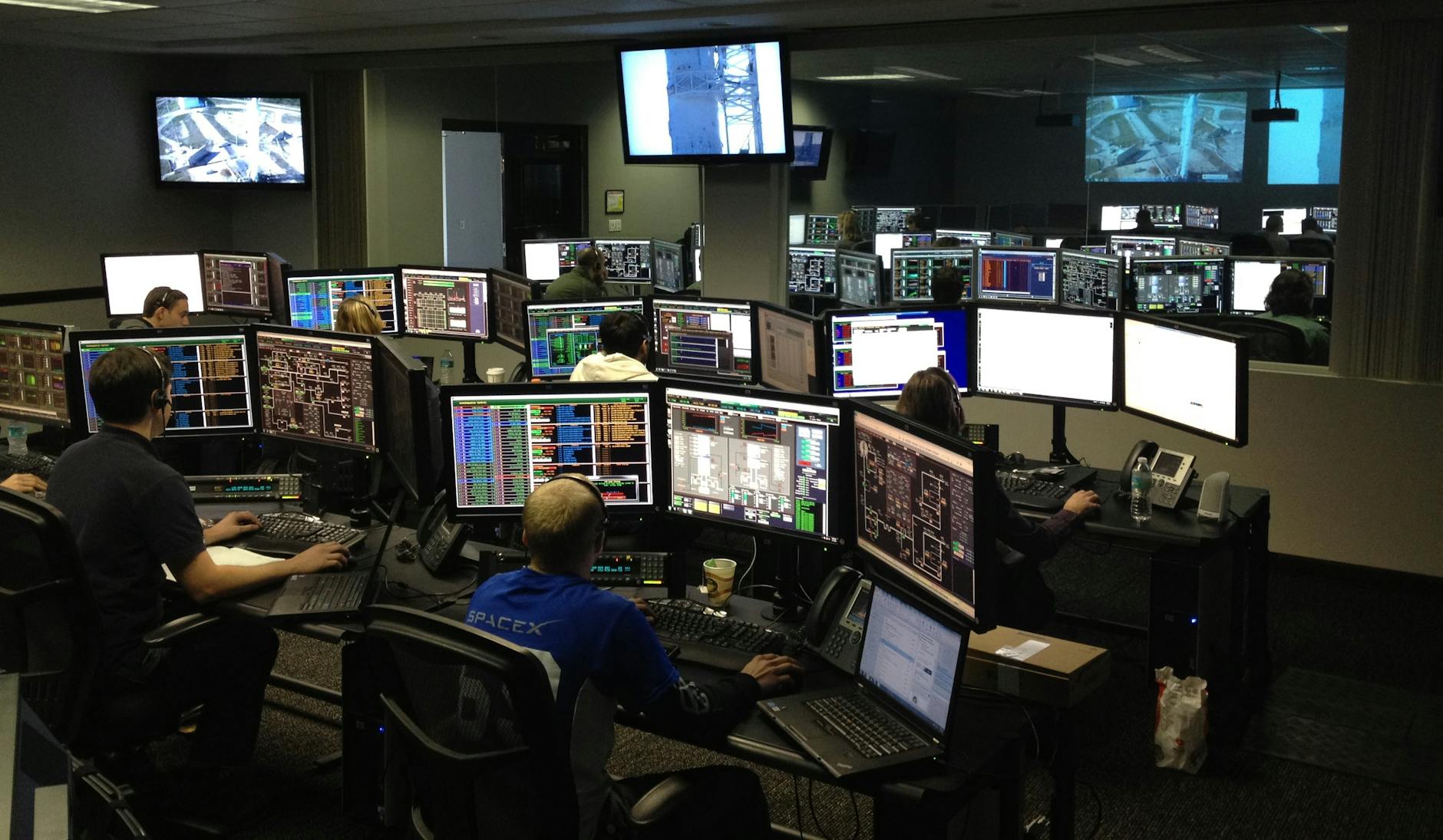ManimML: Visualizing Machine Learning Concepts Through Animation
Visualizing complex machine learning architectures brings theoretical concepts to life
The Visualization Challenge in Machine Learning
Machine learning architectures have grown increasingly complex, making them difficult to understand through mathematical notation alone. ManimML addresses this challenge by providing an open-source framework for creating precise animations of machine learning concepts using the powerful Manim Community Library. This tool bridges the gap between theoretical concepts and intuitive understanding by transforming abstract operations into visual demonstrations.
Developed as a specialized extension to Manim, ManimML offers pre-built components specifically designed for visualizing machine learning workflows. The library enables both educators and practitioners to create high-quality animations that demonstrate neural network operations, layer interactions, and data transformations without requiring extensive programming expertise.
Core Installation Process
Prerequisite Setup
ManimML requires the Manim Community Library as its foundation. Installation follows these precise steps:
# Install Manim Community Edition
pip install manim
# Install ManimML from PyPI
pip install manim-ml
# Alternative: Install from source for latest features
git clone https://github.com/helblazer811/ManimMachineLearning.git
cd ManimMachineLearning
pip install -e .
Configuration Essentials
Proper rendering requires basic configuration:
from manim import *
# Set rendering parameters
config.pixel_height = 700
config.pixel_width = 1900
config.frame_height = 7.0
config.frame_width = 7.0
These settings ensure animations maintain proper aspect ratios and resolution for educational content.
Creating Your First Animated Neural Network
Convolutional Network Visualization
This complete example generates an animated convolutional neural network:
from manim import *
from manim_ml.neural_network import Convolutional2DLayer, FeedForwardLayer, NeuralNetwork
class CNNScene(ThreeDScene):
def construct(self):
# Initialize network architecture
nn = NeuralNetwork([
Convolutional2DLayer(1, 7, 3, filter_spacing=0.32),
Convolutional2DLayer(3, 5, 3, filter_spacing=0.32),
Convolutional2DLayer(5, 3, 3, filter_spacing=0.18),
FeedForwardLayer(3),
FeedForwardLayer(3),
], layer_spacing=0.25)
# Position network
nn.move_to(ORIGIN)
self.add(nn)
# Generate and execute animation
forward_pass = nn.make_forward_pass_animation()
self.play(forward_pass)
Execution Command
Render the animation with:
manim -pql cnn_animation.py
Precise code produces precise visualizations – ManimML bridges equations and intuition
Comprehensive Visualization Guide
Scene Construction Fundamentals
All ManimML visualizations exist within a Scene context. For 3D content, use the ThreeDScene class:
class BasicScene(ThreeDScene):
def construct(self):
# Scene components go here
network = NeuralNetwork([...])
self.add(network)
Feedforward Network Implementation
Represent basic multilayer perceptrons:
from manim_ml.neural_network import NeuralNetwork, FeedForwardLayer
# Three-layer perceptron
nn = NeuralNetwork([
FeedForwardLayer(num_nodes=3), # Input layer
FeedForwardLayer(num_nodes=5), # Hidden layer
FeedForwardLayer(num_nodes=3) # Output layer
])
self.add(nn)
Forward Pass Animation
Automate forward propagation visualization:
# Create network
nn = NeuralNetwork([...])
# Generate propagation animation
forward_pass_animation = nn.make_forward_pass_animation()
# Execute animation sequence
self.play(forward_pass_animation)
Convolutional Network Layers
Visualize feature map transformations:
from manim_ml.neural_network import Convolutional2DLayer
# Multilayer CNN architecture
nn = NeuralNetwork([
Convolutional2DLayer(1, 7, 3, filter_spacing=0.32),
Convolutional2DLayer(3, 5, 3, filter_spacing=0.32),
Convolutional2DLayer(5, 3, 3, filter_spacing=0.18)
], layer_spacing=0.25)
Image Processing Visualization
Demonstrate input image transformations:
import numpy as np
from PIL import Image
from manim_ml.neural_network import ImageLayer
# Load input image
image = Image.open("digit.jpeg")
numpy_image = np.asarray(image)
# Image processing pipeline
nn = NeuralNetwork([
ImageLayer(numpy_image, height=1.5),
Convolutional2DLayer(1, 7, 3),
Convolutional2DLayer(3, 5, 3)
])
Max Pooling Operations
Visualize spatial dimension reduction:
from manim_ml.neural_network import MaxPooling2DLayer
# Pooling layer integration
nn = NeuralNetwork([
Convolutional2DLayer(1, 8),
Convolutional2DLayer(3, 6, 3),
MaxPooling2DLayer(kernel_size=2),
Convolutional2DLayer(5, 2, 2)
])
Activation Function Visualization
Illustrate nonlinear transformations:
# Layers with activation demonstrations
nn = NeuralNetwork([
Convolutional2DLayer(1, 7, activation_function="ReLU"),
FeedForwardLayer(3, activation_function="Sigmoid")
])
Dropout Regularization
Animate regularization techniques:
from manim_ml.neural_network.animations.dropout import make_neural_network_dropout_animation
# Create deep network
nn = NeuralNetwork([
FeedForwardLayer(3),
FeedForwardLayer(5),
FeedForwardLayer(3),
FeedForwardLayer(5)
])
# Generate dropout animation
dropout_anim = make_neural_network_dropout_animation(
nn, dropout_rate=0.25, do_forward_pass=True
)
self.play(dropout_anim)
ManimML transforms abstract operations into visible transformations – from input to output
Advanced Implementation Techniques
Custom Visual Styling
Modify visual properties for clarity:
# Customized network appearance
nn = NeuralNetwork(
layers=[
FeedForwardLayer(5, node_radius=0.15, color=BLUE),
FeedForwardLayer(3, node_radius=0.12, color=GREEN)
],
layer_spacing=0.5,
edge_color=GRAY,
edge_width=2.0
)
3D Network Visualization
Leverage three-dimensional representation:
class Advanced3DScene(ThreeDScene):
def construct(self):
self.set_camera_orientation(phi=75*DEGREES, theta=30*DEGREES)
# 3D network configuration
nn = NeuralNetwork([...], layer_spacing=0.5)
nn.rotate(20*DEGREES, axis=RIGHT)
self.add(nn)
self.play(nn.make_forward_pass_animation(run_time=5))
Complex Animation Sequencing
Combine multiple animations:
# Animation sequence composition
anim_sequence = AnimationGroup(
Create(nn),
nn.make_forward_pass_animation(),
make_neural_network_dropout_animation(nn),
lag_ratio=0.5
)
self.play(anim_sequence)
Practical Applications
Educational Demonstrations
ManimML excels at creating pedagogical content. This example visualizes edge detection:
# Edge detection demonstration
nn = NeuralNetwork([
ImageLayer(edge_detection_image, height=2.0),
Convolutional2DLayer(1, 5, 3, filter_spacing=0.4),
Convolutional2DLayer(1, 3, 3, filter_spacing=0.3)
])
Architectural Comparison
Visually contrast different network architectures:
# Comparative visualization
cnn = NeuralNetwork([...])
rnn = NeuralNetwork([...])
transformer = NeuralNetwork([...])
# Positional arrangement
cnn.move_to(LEFT*3)
rnn.move_to(ORIGIN)
transformer.move_to(RIGHT*3)
self.add(cnn, rnn, transformer)
Research Illustration
Generate publication-quality figures:
# High-resolution configuration
config.pixel_height = 2000
config.pixel_width = 2000
config.frame_height = 10
config.frame_width = 10
# Detailed model visualization
detailed_nn = NeuralNetwork([...], layer_spacing=0.3)
self.add(detailed_nn)
Academic Recognition
ManimML research has been formally documented:
@misc{helbling2023manimml,
title={ManimML: Communicating Machine Learning Architectures with Animation},
author={Alec Helbling and Duen Horng and Chau},
year={2023},
eprint={2306.17108},
archivePrefix={arXiv},
primaryClass={cs.LG}
}
Conclusion
ManimML transforms abstract machine learning concepts into tangible visualizations through precise animation capabilities. The library provides:
-
Specialized Components: Pre-built neural network layers and visualization primitives -
Animation Automation: Built-in animations for forward propagation, dropout, and activations -
Customization Framework: Flexible styling and layout options -
3D Capabilities: Volumetric representation of complex architectures -
Publication-Ready Output: High-resolution rendering for academic use
By bridging the gap between mathematical formalism and visual intuition, ManimML serves as an essential tool for educators explaining machine learning concepts, researchers presenting novel architectures, and practitioners debugging model behavior. The library continues to evolve as a dedicated visualization framework within the Manim ecosystem, making sophisticated machine learning concepts accessible through carefully crafted visual narratives.
As machine learning evolves, visualization remains essential for understanding




